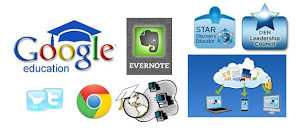When Dr. Martin Ringle introduced the then-new iPad to Oregon’s Reed
College in the fall of 2010, he was more than a little cautious. After
all, he had seen educational-technology trends come and go—he even had
an old Apple Newton gathering dust in a drawer somewhere.
Ringle, the chief technology officer at Reed, planned to try iPads
purely as a test and not to get caught up in the hype. “We want students
and faculty to have the devices in a live setting,” Ringle said, “and
see what they discover.”
Two years later, after multiple pilot programs, Ringle has this to report: He is an iPad believer.
I am a big believer in routines. My first task each morning,
after I sit down at my computer and settle in for the day, is to scour
my favorite education blogs and websites for information that I think
our readers might find useful.




